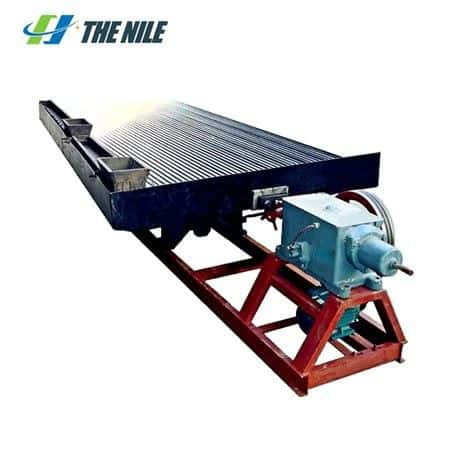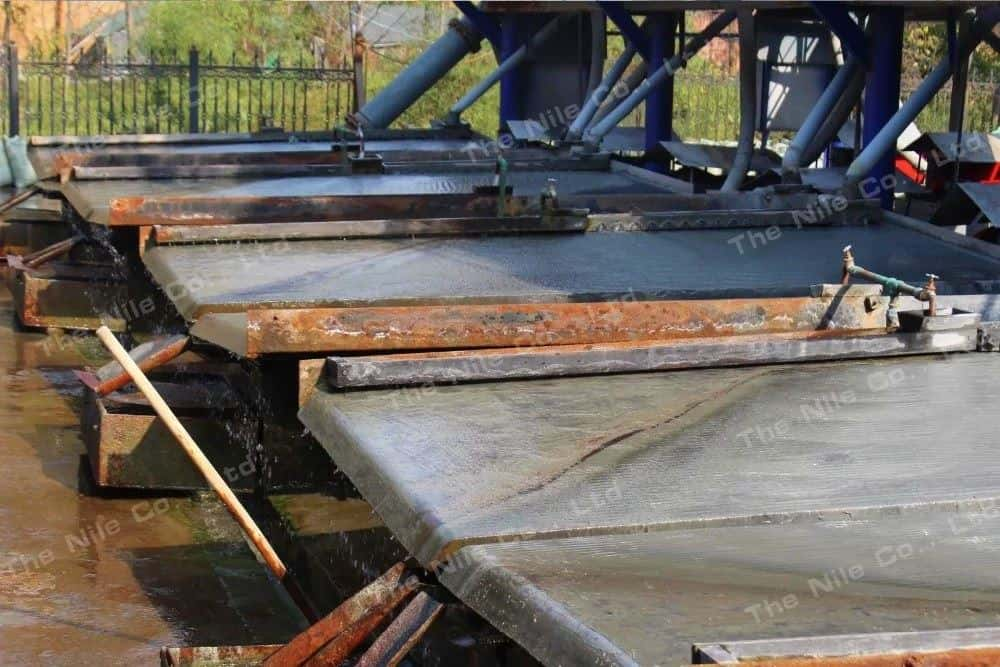

Products
Home > Products > Mineral Processing Equipment > Shaking Table
Processing Materials: Shaking table for gold processing is mainly used for the separation of ferrous metals (iron, manganese, chromium), rare metals (tantalum, niobium, thorium, zirconium, titanium, etc.), and precious metal ores. It is also used to separate non-metallic minerals such as pyrite, apatite, diamond, asbestos, and so on.

Characteristics of Shaking Table for Gold Processing
Compared with other mineral processing methods, the shaking table for gold processing has the advantages of large processing capacity, wide separation particle size range, simple equipment structure, no consumption of valuable production materials, low operation cost, and no pollution. So it is widely used in gold, tungsten, and tin ore dressing.

Feeding Volume Adjustment
The feeding amount of the shaking table for gold processing is related to the feed size and washability. When the feed size is large and the washability is good, the feeding amount can be large, otherwise, it is small. When the feed selectivity and shaker characteristics are fixed, there can be a certain amount of feed. At this time, under the conditions of the corresponding lamination speed and accuracy, the feeding amount should be balanced with the product discharge quantity. Otherwise, if the treatment capacity is too large, there will be no time for stratification, which will affect the separation quality. If the treatment capacity is too small, it will not be enough to lay the bed, even worse, the separation will not be good.
Technical Parameters of Shaking Table for Gold Processing
Model NO. | 6S | Tbele Size | 4520*1850*156mm | |
Stroke | 8-36mm | Motor Power | 1.1kw | |
Time/min | 240-380 | Dimension | 5630*1850*900mm | |
Landscape | 0-5° | Table Weight | 650kg | |
Material | Feeding Size | Mine Density | Flushing Water | Capacity(t/h) |
Coarse Sand | 2-0.5mm | 10-30% | 0.5-3.5t/h | 1-2.5 |
Fine Sand | 0.5-0.074mm | 0.8-1.2 | ||
Ore Mud | 0.0774-0.037mm | 0.3-0.6 | ||